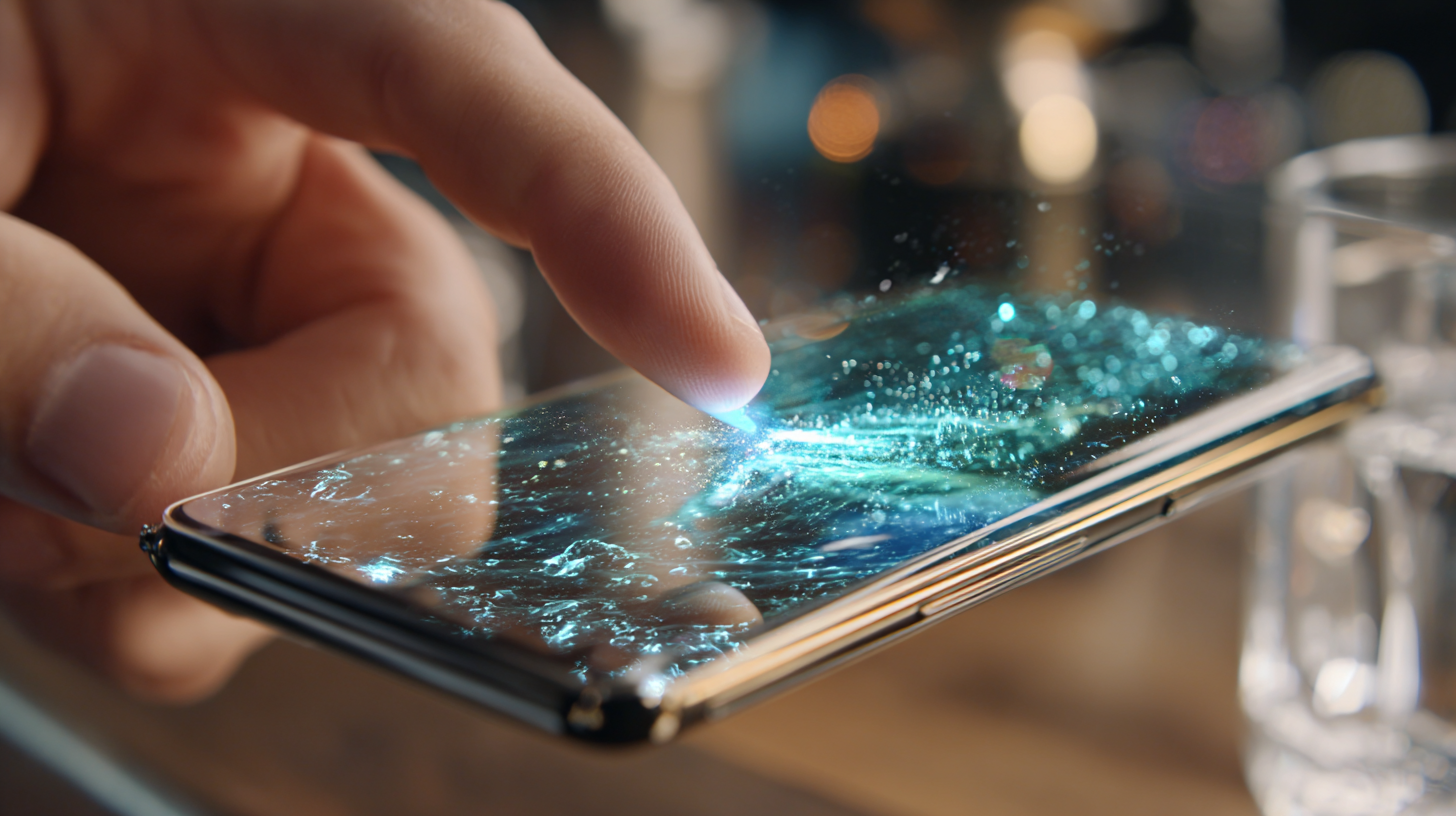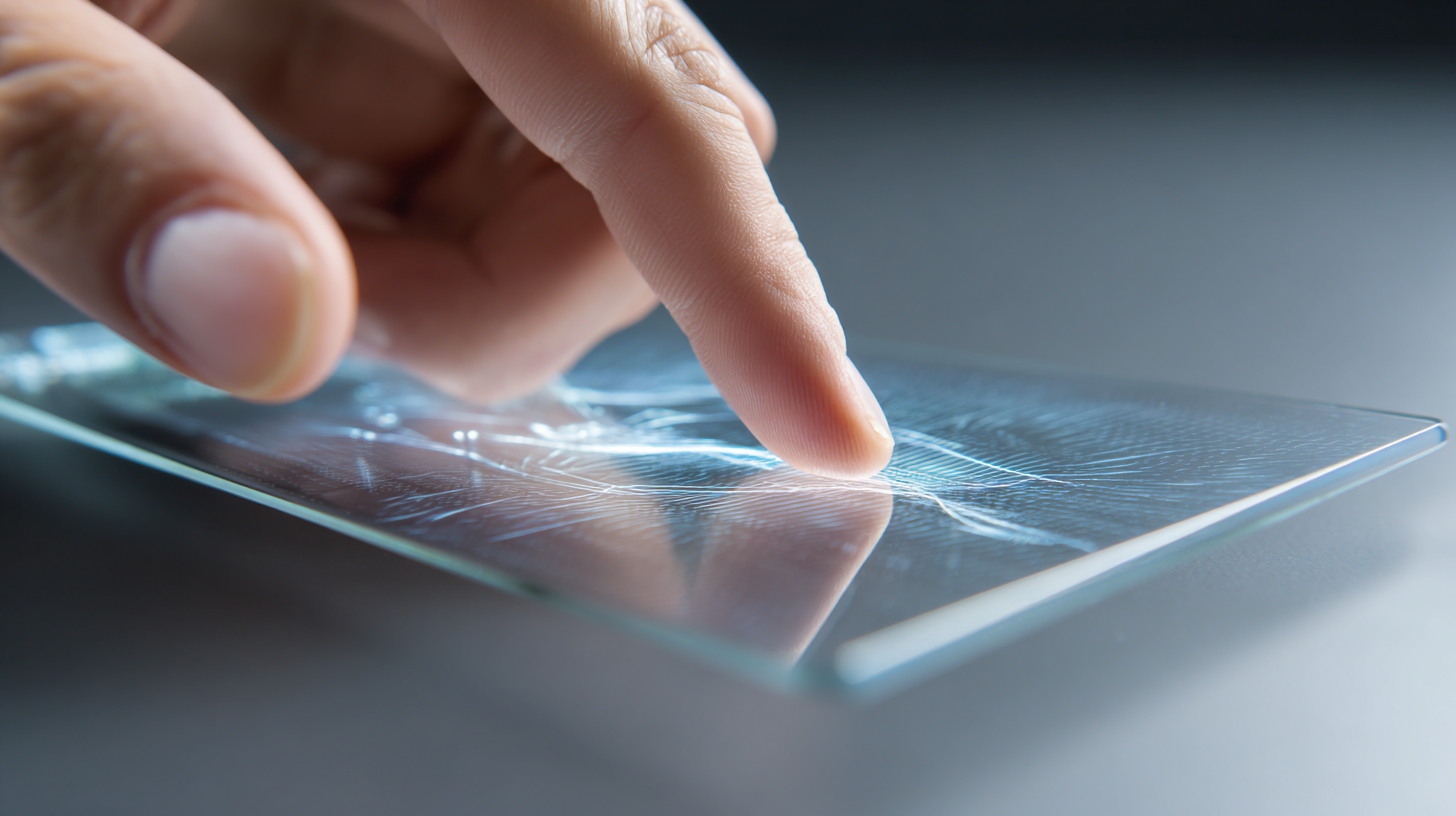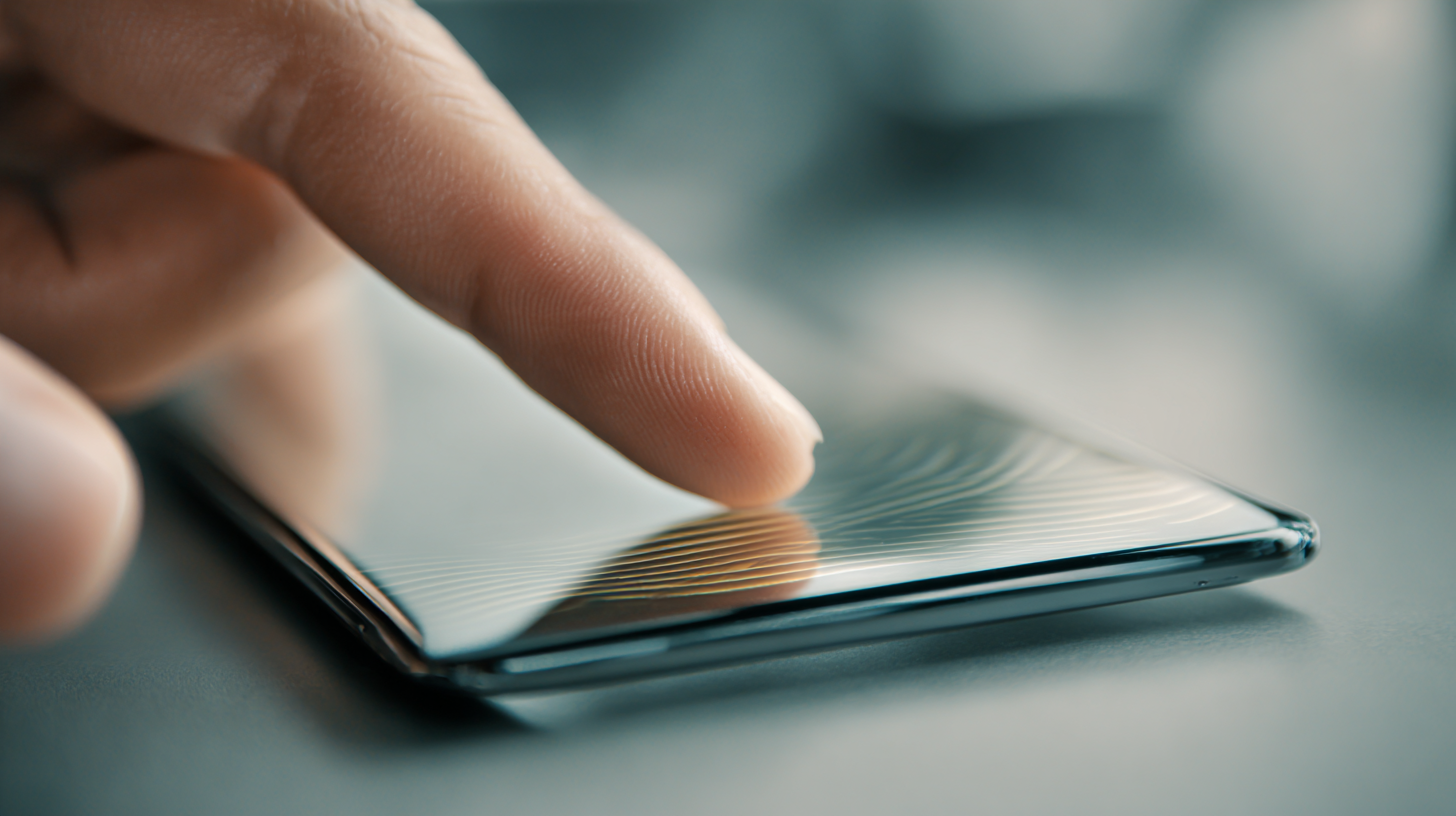
The technology industry has seen remarkable advancements in recent years, particularly in the realm of Touch Screen Cover Glass, which is projected to reach a global market value exceeding $6 billion by 2025, according to a report by MarketsandMarkets. As consumer preference shifts towards devices with enhanced durability and aesthetic appeal, the demand for innovative alternatives to traditional cover glass has intensified. Key players in the market are exploring advanced materials such as Gorilla Glass, ceramic, and even flexible polymers to address consumer needs. This exploration not only aims to improve the performance and longevity of touch screens but also to optimize manufacturing processes and reduce environmental impact. As we delve into this topic, we will discuss various examples and trends shaping the future of Touch Screen Cover Glass, examining how innovation will continue to redefine user experience and industry standards.

The touch screen cover glass industry is undergoing a transformative shift as manufacturers explore innovative materials to enhance performance and durability. Traditionally, Gorilla Glass has dominated the market, with its impressive toughness and scratch resistance. However, recent studies suggest that alternatives such as sapphire glass and polymer-based options are making strides. For instance, a report by MarketsandMarkets highlights that the global market for sapphire glass is projected to grow from $4.2 billion in 2021 to $8.7 billion by 2026, largely driven by its superior hardness and aesthetic benefits.

In the ever-evolving tech industry, enhancing user experience is paramount, especially when it comes to touch screen devices. One of the most significant innovations in this realm is the rise of anti-reflective coatings. These coatings dramatically reduce glare, allowing users to interact with their devices more comfortably and efficiently, even in bright environments. By minimizing reflections, anti-reflective coatings ensure that the display remains clear and vibrant, which is crucial for tasks ranging from browsing the web to online gaming.
Moreover, the introduction of advanced anti-reflective technologies has opened new avenues for device manufacturers. These coatings not only improve visibility but also contribute to a more immersive experience by enhancing contrast and color accuracy. As consumers demand higher standards from their tech devices, the integration of such coatings has become a key differentiator in the market. By prioritizing user comfort and clarity, manufacturers that adopt these innovative solutions position themselves at the forefront of the tech industry, catering to an audience that values both functionality and aesthetics.
In the rapidly evolving tech industry, the selection of materials for touch screen cover glass is heavily influenced by durability and scratch resistance. According to a report from Smithers Pira, the touchscreen market is expected to reach $90 billion by 2025, with manufacturers increasingly prioritizing the use of advanced materials that can withstand everyday wear and tear. Gorilla Glass, for instance, has been a leading choice, providing a balance of toughness and lightweight properties, boasting a scratch hardness rating of up to 8 on the Mohs scale. This resilience plays a crucial role in user satisfaction, as devices are often subject to daily drops and scratches.
Furthermore, emerging alternatives like sapphire glass and polymer-based solutions are gaining traction due to their impressive durability and resistance to scratching. Research from IHS Markit reveals that sapphire glass, while more expensive, can offer nearly double the scratch resistance compared to traditional silica-based glass. Conversely, innovative polymer coatings are being developed that can enhance the scratch resistance of existing materials without significantly increasing costs. As the technology sector continues to innovate, the ongoing focus on material durability is set to drive the design and functionality of next-generation devices, ensuring that they meet consumer demands for longevity and high performance.

As the tech industry continues to evolve, there is a growing demand for sustainable practices in manufacturing. Traditional touch screen cover glass, while functional, often poses environmental challenges due to its production processes and material lifespan. This has led innovators to explore eco-friendly alternatives that can reduce waste and carbon footprints while maintaining the high standards required for modern technology.
One promising approach is the use of biodegradable materials such as bioplastics, derived from renewable sources like cornstarch or sugarcane. These materials can be designed to mimic the clarity and touch sensitivity of glass, offering an innovative solution that can decompose safely at the end of their lifecycle. Additionally, companies are investigating glass-like coatings made from recycled materials. These alternatives not only utilize waste but also contribute to a circular economy, where resources are continuously repurposed.
Furthermore, advancements in the development of plant-based glass composites are paving the way for a sustainable future in the tech industry. These composites combine natural fibers with traditional glass, creating a stronger, lightweight product that can reduce reliance on virgin materials. By prioritizing sustainability in manufacturing, tech companies can not only improve their environmental impact but also appeal to a growing market of eco-conscious consumers.
The touch screen cover glass market is witnessing dynamic growth, driven by advancements in display technologies and the increasing demand for interactive devices. By 2025, the global transparent conductive films market is projected to reach $7.00 billion, with forecasts indicating that it will continue to expand at a compound annual growth rate (CAGR) of 8.5%, reaching an impressive $12.35 billion by 2032. This growth is indicative of a broader trend across the tech industry, where enhanced user experiences are necessitating more robust and innovative touch screen solutions.
Similarly, the photosensitive glass market is on an upward trajectory. Expected to grow from $3.14 billion in 2025 to $4.69 billion by 2034, this segment signifies the increasing versatility and application of glass materials in high-tech environments. Additionally, the ITO conductive coated glass market is forecasted to reach $735 million by 2035, highlighting the pivotal role that advanced coatings play in the functionality of touch screens. These trends reflect a clear shift towards sophisticated materials that not only enhance performance but also meet the evolving needs of consumers in an increasingly digital world.
| Year | Global Market Size (USD Billion) | Projected Growth Rate (%) | Major Segments | Key Innovations |
|---|---|---|---|---|
| 2021 | 20.5 | 4.0 | Smartphones, Tablets, Laptops | Ultra-thin Glass, Anti-reflective Coatings |
| 2022 | 22.1 | 7.8 | Wearable Devices, Automotive | Flexible Glass, Self-healing Materials |
| 2023 | 24.0 | 8.6 | Touchscreens, Home Appliances | Anti-bacterial Glass, Enhanced Durability |
| 2024 | 26.5 | 10.4 | IoT Devices, Gaming Consoles | 3D Glass, Integration with AR/VR |
| 2025 | 29.0 | 9.4 | Healthcare, Education | Smart Textiles, Biometric Integration |